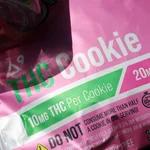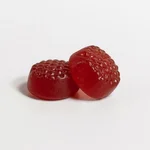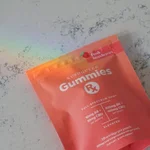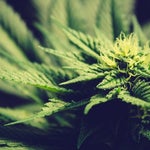The Basics of Edibles
Edibles are cannabis-infused products that people consume for medicinal or recreational purposes. They come in many forms, including gummies, chocolates, cookies, and brownies. Unlike smoking or vaping, edibles take longer to take effect and last longer in the body. This is because the cannabinoids in edibles need to be digested and metabolized before they can enter the bloodstream and affect the brain and body.
How Edibles Work
When people consume edibles, the cannabinoids in them bind to receptors in the body’s endocannabinoid system. This system helps regulate various physiological processes such as appetite, pain, mood, and sleep. THC is the psychoactive compound in cannabis that produces a “high.” It binds to CB1 receptors in the brain and central nervous system, while CBD does not bind to these receptors.
The Importance of Dosage
Due to the delayed onset and longer duration of edibles, it’s crucial to start with a low dosage and wait a few hours before taking more. The effects of edibles can be intense and unpredictable, especially for first-time users or those with a low tolerance for cannabis. Overconsumption can lead to unpleasant side effects such as anxiety, paranoia, and nausea.
The Digestive Process
After ingesting edibles, they travel through the digestive system, starting in the mouth and ending in the anus. The digestive system breaks down food into nutrients that can be absorbed into the bloodstream and used by the body for energy and other functions. The digestive process includes several stages:
Stage 1: Mouth
The digestive process begins in the mouth when we chew and swallow food. Saliva contains enzymes that start breaking down carbohydrates and fats in the food. However, cannabinoids in edibles do not get metabolized in the mouth or absorbed into the bloodstream through the mouth lining.
Stage 2: Stomach
Once food enters the stomach, it mixes with gastric juices that contain enzymes and hydrochloric acid. The stomach churns the food, breaking it down into smaller particles and releasing more enzymes. The cannabinoids in edibles are not water-soluble, so they do not dissolve in the stomach’s acidic environment. Instead, they pass through to the small intestine.
Stage 3: Small Intestine
The small intestine is where most of the nutrients from food get absorbed into the bloodstream. The digestive enzymes from the pancreas and bile from the liver break down the food further, and the nutrients get absorbed through the walls of the small intestine. The cannabinoids in edibles are fat-soluble, so they bind to the fats in the food and get carried into the bloodstream.
Stage 4: Liver
The liver is the body’s primary metabolic organ. It filters the blood and metabolizes drugs, toxins, and other substances. When the cannabinoids in edibles enter the liver, they get broken down into smaller compounds. THC gets converted into 11-hydroxy-THC, which is more potent and long-lasting than THC itself. CBD does not get metabolized in the liver and does not produce psychoactive effects.
Stage 5: Large Intestine
The large intestine absorbs water and electrolytes from the remaining food material, forming solid feces. Any cannabinoids that were not metabolized in the liver get excreted in the feces.
Factors That Affect Digestion
Several factors can affect how edibles get digested and metabolized in the body. These include:
Food
The type and amount of food people consume with edibles can affect how quickly the cannabinoids get absorbed into the bloodstream. Fatty foods can help cannabinoids bind to fats and enter the bloodstream more efficiently. However, too much food can slow down the digestive process and delay the onset of effects.
Body Composition
People with more body fat may experience stronger and longer-lasting effects from edibles. This is because cannabinoids are fat-soluble and can accumulate in fatty tissues.
Metabolism
Individuals with faster metabolisms may experience faster onset and shorter duration of effects from edibles. This is because the cannabinoids get broken down and eliminated from the body more quickly.
Tolerance
People with higher tolerance for cannabis may need higher dosages of edibles to feel the desired effects. However, tolerance can also lead to overconsumption and negative side effects.
Conclusion
In conclusion, edibles are an increasingly popular way to consume cannabis. They offer a discreet and convenient option for people who prefer not to smoke or vape. However, edibles’ delayed onset and longer duration of effects can be challenging to predict and manage. Understanding how edibles get digested and metabolized in the body can help people make informed decisions about dosage and timing. Remember to start with a low dose, be patient, and enjoy responsibly.












